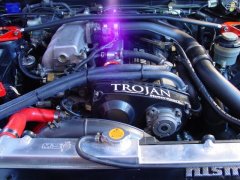Everything You Can Do To Improve Lag
Announcements
-
Similar Content
-
Latest Posts
-
This is actually a really good way of measuring what wheels fit. If only there was a similar measurement between hub face and suspension :p That said, it's probably pretty simple to actually measure it all with the wheel off the car for the rear. The front is a bit more complex but..
-
Being the top Google search result for R34 wheel-related inquiries, lemme throw down my experience. I calculated that 100mm from hub face to wheel face is about the perfect fitment for my ENR34 sedan. I've been running 18x8.5s, ET35, with a 1" spacer. So, 8.5in to mm = 216mm. 216/2 = 108mm. 108-35 = 73mm. 73+ 25 (1" to mm) = 98mm. If you wanna get close to this on dif widths, here are the offsets you'll want: 9" - ET around 15mm 9.5" - ET around 20mm 10" - you're crazy, but ET around 30mm All these should fit perfectly on a non-widebody, non-GTR Skyline. Note that it's probably the absolute max, and you're probably better off running a couple degrees of camber in this config, but it looks great, super flush.
-
By joshuaho96 · Posted
Oh yeah, always always always turn over an engine by hand first. -
So by that logic, an insanely expensive GTR for $200k+ is quite cheap, at 12% of Sydney's median house price compared to over 50% when a GTR was new...
-
Apologies... thought i had outlined it... Cheers for the response, I'll get a nipple sorted out for this.
-








Recommended Posts
Create an account or sign in to comment
You need to be a member in order to leave a comment
Create an account
Sign up for a new account in our community. It's easy!
Register a new accountSign in
Already have an account? Sign in here.
Sign In Now